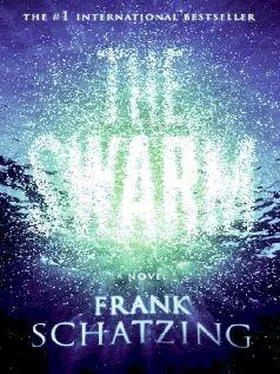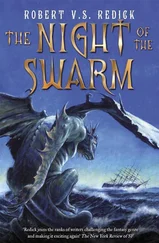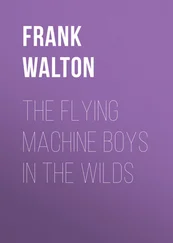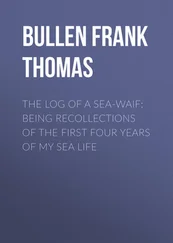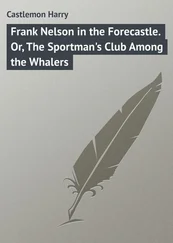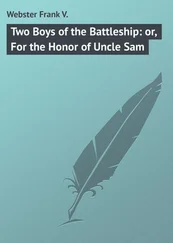'There's nothing normal about this business,' Roberts said. 'It was my idea. I'd read your book and I knew you were based on the island. The board of inquiry wasn't too happy about it, but I think it was the right thing to do. Whales aren't our strong point.'
'Well, I'll do my best. Let's get the samples into the helicopter. The sooner we get to Nanaimo the better. I'll hand them straight to Sue Oliviera. She's head of the lab, a molecular biologist.'
Anawak's mobile rang. It was Stringer. 'We need you back here,' she said.
'What's wrong?'
'The Blue Shark radioed to say there's trouble.' Anawak had a sense of foreboding. 'With the whales?'
'Of course not!' Why would whales cause trouble? No, it's that asshole Jack Greywolf again. He's such a jerk.'
Kiel, Germany
Two weeks after he'd given Tina Lund the final reports on the worms, Sigur Johanson was sitting in a taxi on his way to the Geomar Centre, Europe's leading research centre for marine geosciences. For anyone interested in the structure, development or history of the seabed, it was the first port of call. James Cameron, no less, had made regular trips there to get its seal of approval for films like Titanic and The Abyss . But trying to convince the public of the value of its research was more difficult. On the face of it, poking about in sediment or measuring seawater salinity was unlikely to solve the world's problems. Besides, few had any understanding of what the seabed was like. After all, it had taken scientists until the early 1990s to discover the truth. Although it was cut off from the warmth and light of the sun, the bottom of the ocean was not a barren wasteland. Rather, it teemed with life.
It was no secret that deep-sea hydrothermal vents were occupied by numerous exotic species, but when geochemist Erwin Suess arrived at the Geomar Centre from Oregon State University in 1989, he told of stranger things – cold seeps surrounded by oases of life, mysterious sources of chemical energy rising from inside the Earth, and vast deposits of a substance that until then had been dismissed as an intriguing but insignificant by-product of natural processes: methane hydrate.
It was time for the geosciences to break out of the seclusion in which they, like most other scientific disciplines, had worked. Now they tried to make themselves heard. They hoped to develop methods for predicting and averting natural disasters and long-term changes to the environment and climate. Methane seemed the answer to the energy problem of the future. The media sensed a story, and the geoscientists learned gradually how to make use of the new-found interest in their work.
None of this seemed to have come to the attention of the man steering Johanson's taxi towards the Firth of Kiel. For the past twenty minutes he had been venting his frustration at the idea of a research centre that had cost millions of euros being entrusted to a team of scientists who took off on cruises round the world while he could barely make ends meet. Johanson spoke excellent German, but felt no desire to set the record straight. Besides, he couldn't get a word in edgeways – the driver was talking and gesticulating wildly as the taxi veered from side to side. 'God knows what they get up to in there,' he grumbled 'Are you a reporter?' he asked, when Johanson failed to respond.
'A biologist.'
The driver took that as a signal to launch into a tirade about food-safety scandals, for which he seemed to hold Johanson personally responsible.
'A biologist? So what, in your expert opinion, is safe for us to eat? Because I'm damned if I know! We must be mad to eat the stuff they sell us.'
'You'd starve if you didn't,' said Johanson.
'If I don't eat, I'll starve, and if I do, the food'll finish me off.'
'If you don't mind me saying so, I'd rather die from a toxic steak than be crashed to death on the bonnet of that tanker.'
Without a flicker of concern the driver spun the wheel and crossed three lanes to take the next exit. The tanker thundered past. Now they were speeding along the eastern shore of the firth. On the opposite bank, giant cranes reached into the sky.
The driver had evidently taken offence at Johanson's last comment: he didn't say another word. They drove in silence along suburban streets past tall, gabled houses until a long row of linked buildings appeared ahead. The complex of steel, brick and glass looked out of place in its domestic surroundings. The driver took a sharp right and screeched to a halt in front of the Geomar Centre. The engine juddered and stopped. Johanson took a deep breath, paid, and got out. The ride in the Statoil helicopter had been a breeze compared to the last fifteen minutes.
'God knows what they're doing in there,' said the driver, apparently to his steering-wheel.
Johanson bent down to the open passenger door. 'Do you really want to know?'
'Sure.'
'They're trying to save the taxi-driving industry.'
The driver gazed at him blankly. 'It's not as though we get many fares out here,' he said doubtfully.
'No, but when you do, you need your vehicle. Which means that when the world runs out of petrol, you'll either have to scrap it – or use another fuel. And that fuel, methane, is at the bottom of the ocean. They're looking for a way to convert it.'
The driver frowned. Then he said, 'You know what the problem is? They never bother to tell you.'
'It's all over the papers.'
'Not the ones I read, mate.'
Johanson nodded and closed the door.
'Dr Johanson.' A tanned young man had emerged from a round glass building and was heading towards him.
Johanson shook his outstretched hand. 'Gerhard Bohrmann?'
'Heiko Sahling, marine biologist. Dr Bohrmann's giving a lecture. We could listen, if you like, or grab a coffee in the canteen.'
'Which would you rather?'
'Entirely up to you. Interesting worms you sent us, by the way.'
'You've been working on them?'
'We've all been working on them. Tell you what, why don't you come this way? We'll save the coffee for later. Gerhard will be finished in a moment, and he won't mind if we eavesdrop.'
They entered a spacious foyer with an air of sophisticated functionality about it. Sahling led him up some stairs and across a steel suspension bridge. For a serious research institute, thought Johanson, the Geomar Centre was suspiciously trendy.
'We usually use the auditorium for lectures,' explained Sahling, 'but today we've got a class of schoolkids.'
'How terribly worthy.'
Sahling grinned. 'To a bunch of fifteen-year-olds, an auditorium is just another classroom, which is why we do a tour with them instead. They can look at whatever they want – and touch nearly everything – too. We saved the lithotbek until last. It's where we keep our samples. Now Gerhard is telling them their bedtime story.'
'About what?'
'Methane hydrates.'
Sahling slid open the metal door. The raised platform continued on the other side. They took a few steps along it. The storeroom was at least as big as a medium-sized aircraft hangar and led out on to the quay, where Johanson caught a glimpse of a relatively large boat. Crates and equipment were piled against the walls.
'We mostly collect sediment cores and pore-water,' explained Sahling. 'It's an archive of geological history and we're proud of it.'
He raised his hand briefly. Below, a tall man returned the greeting, then focused on the group of teenagers clustered around him.
'It was one of the most exciting things we've ever seen,' Gerhard Bohrmann was saying. 'The grab sampler returned from a depth of nearly eight hundred metres, carrying several hundred pounds of sediment, interspersed with white lumps. We watched as it emptied them on to the deck. Not all of the substance survived the journey.'
Читать дальше
